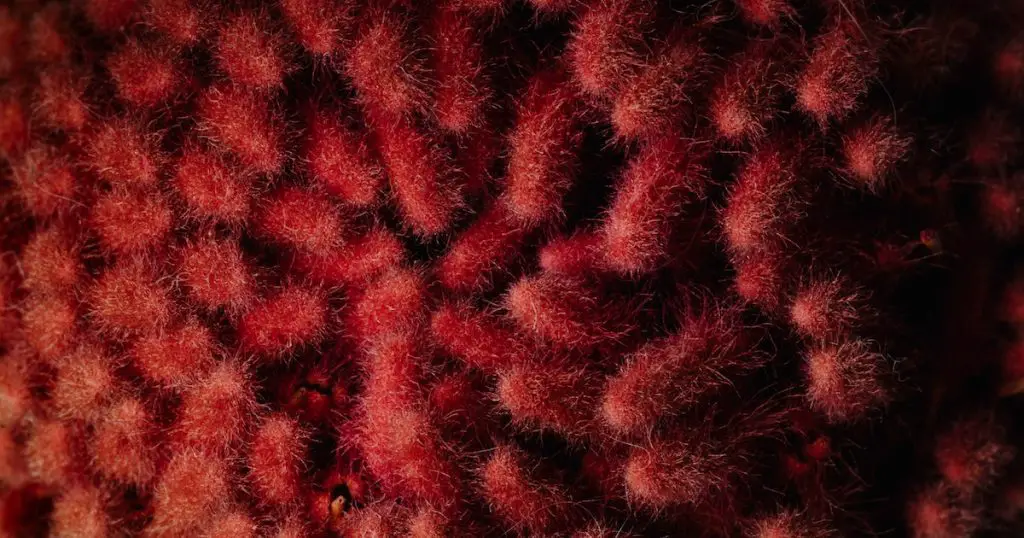Nestled in the mountains of north-central Arizona, Prescott is home to a unique blend of desert and mountain climates. Given the ever-increasing water scarcity concerns, homeowners and horticulturists are turning towards drought-resistant plants native to Prescott.

Incorporating these resilient flora into local landscapes not only supports the environment but also ensures a vibrant garden even in the driest conditions.
The Science Behind Drought Resistance
The marvel of nature is evident in how plants have evolved to survive in the most challenging environments. The secret to their survival lies in a range of physiological and morphological adaptations.
For instance, some plants develop deep roots to tap into groundwater, while others reduce their leaf size to minimize water loss through evaporation. A few even employ a unique photosynthesis process, known as CAM photosynthesis, allowing them to open their stomata at night, minimizing water loss.
Prescott’s diverse ecosystem, with its alternating wet and dry seasons, has influenced the evolution of many local flora. This variability in climatic conditions has endowed the plants with mechanisms to store water and reduce its loss.
Trees and Large Shrubs
Majestically rising above the Prescott landscape, trees and large shrubs stand as sentinels of time, bearing witness to the changing seasons and years. Their sturdy trunks and expansive canopies offer shade, reducing the heat of the sun, and creating microclimates that benefit understory plants.
Species like the Palo Verde, with its green bark and golden blooms, or the Mesquite tree, with its intricate branching pattern, not only enhance visual aesthetics but also serve as vital habitats for birds, mammals, and other wildlife.
These towering plants are the cornerstones of the garden, grounding it with their presence and ensuring that the land’s narrative is told through whispers of leaves and the songs of those who take refuge in their embrace.
Alligator Juniper
Named after its bark that resembles an alligator’s skin, this tree is known for its resilience. The Alligator Juniper can thrive in rocky soils, making it perfect for Prescott’s terrain.
Its deep root system helps it access to water from below the ground, allowing it to survive extended dry periods.
Arizona Cypress
With its silvery-blue foliage, the Arizona Cypress is a visual delight. Beyond its beauty, this tree is adapted to survive in drought conditions.
The leaves have a waxy coating, which reduces transpiration, ensuring minimal water loss. It’s an ideal choice for those looking to add a touch of elegance to their gardens while staying eco-conscious.
Apache Plume
A native shrub of the Southwest, Apache Plume stands out with its feathery seed heads that glisten in the sun.
Its small leaves and sprawling branches make it an excellent choice for ground cover, preventing soil erosion. The deep-rooted nature of the shrub ensures its survival during prolonged dry spells.
Medium Shrubs and Bushes
As garden stalwarts, medium shrubs, and bushes lend structure and depth to Prescott’s landscapes. These plants, with their woody stems and expansive canopies, serve as living screens, borders, and focal points in gardens. From the fragrant blossoms of the desert lavender to the dense foliage of the jojoba bush, they offer year-round interest, changing their garb with the seasons.
Adaptable and hardy, these shrubs are not just ornamental; they provide essential habitats for birds and insects, making gardens teem with life and echoing the rich tapestry of Prescott’s natural ecosystems.
Red Barberry
Sporting spiky leaves and bright red berries, Red Barberry is both beautiful and hardy. This shrub is perfect for those looking for low-maintenance options.
The berries are also a treat for local birds, ensuring your garden is always buzzing with life.
Desert Lavender
Desert Lavender, as the name suggests, thrives in arid conditions. Its fragrant leaves are a delight, especially after a rare Prescott rain, releasing a fresh, calming aroma.
This shrub is not only drought-resistant but also a magnet for bees and butterflies, enhancing the biodiversity of your garden.
Mormon Tea
Mormon Tea, a unique shrub with jointed green stems, is a sight to behold. Apart from its striking appearance, it has historical significance.
Native Americans used it for medicinal purposes. This plant has minimal leaves, reducing water loss and making it a truly drought-resistant gem.
Groundcovers and Grasses
Carpeting the grounds of Prescott with a blend of texture and tones, groundcovers and native grasses are the unsung heroes of arid landscaping. These plants form a living mulch, moderating soil temperature, conserving moisture, and preventing erosion.

From the silvery threads of blue grama grass to the dense mats of creeping thyme, they offer a low-maintenance alternative to traditional lawns. As they sway with the breeze or burst into occasional blooms, these grasses and groundcovers not only anchor a garden’s design but also echo the wild beauty of Prescott’s native landscapes.
Arizona Fescue
If you’re looking to carpet your garden with green, Arizona Fescue is the answer. This perennial grass, with its deep green hue, is perfect for Prescott’s weather.
The deep root system allows it to draw water from the depths, ensuring a green lawn even in the harshest conditions.
Parry’s Agave
A rosette of thick, succulent leaves characterizes Parry’s Agave. The sharp spines on the leaf edges add a touch of drama to any landscape. Apart from its aesthetic appeal, this plant has evolved to store water in its leaves, ensuring survival during droughts.
With its radiant yellow flowers, the Desert Marigold is a burst of sunshine in any garden. It not only thrives in drought conditions but also attracts a variety of pollinators.
Flowering Plants and Perennials
In the arid terrains of Prescott, succulents and cacti stand as icons of endurance and elegance. These fascinating plants have evolved over millennia to store water in their fleshy leaves and stems, allowing them to withstand prolonged dry spells.
Their unique shapes, ranging from the spiraled rosettes of echeverias to the towering arms of saguaros, add diverse textures and silhouettes to Prescott Gardens. But their allure isn’t just skin-deep; their ability to thrive with minimal care makes them favorites among gardeners, serving as a testament to nature’s ingenuity in adapting to challenging environments.
Penstemon
Flowers are the soul of any garden, and the Penstemon, with its tubular blossoms, is no exception.
Available in a range of colors, from pink to deep red, they are a visual treat. Beyond their beauty, they’re perfectly suited for Prescott’s climate.
Desert Zinnia
Desert Zinnia, with its white, daisy-like flowers, is perfect for those looking to add a touch of innocence to their gardens. These plants are not only drought-resistant but also attract butterflies, ensuring your garden is always alive with activity.
Coral Bells
Adding a splash of color with its vibrant red flowers, Coral Bells are perfect for garden borders. They thrive in the shade, making them ideal for those spaces in your garden that don’t receive direct sunlight.
Their ability to survive with minimal water makes them a favorite among Prescott gardeners.
Succulents and Cacti
In the arid terrains of Prescott, succulents and cacti stand as icons of endurance and elegance. These fascinating plants have evolved over millennia to store water in their fleshy leaves and stems, allowing them to withstand prolonged dry spells.
Their unique shapes, ranging from the spiraled rosettes of echeverias to the towering arms of saguaros, add diverse textures and silhouettes to Prescott Gardens. But their allure isn’t just skin-deep; their ability to thrive with minimal care makes them favorites among gardeners, serving as a testament to nature’s ingenuity in adapting to challenging environments.
Prickly Pear Cactus
A symbol of the desert, the Prickly Pear is more than just a cactus. With its paddle-shaped leaves and bright flowers, it’s a centerpiece in any garden. The fleshy pads store water, enabling the plant to survive prolonged dry spells.
Cholla

Another cactus native to Prescott, the Cholla stands out with its cylindrical stems covered in spines. While it might look menacing, it’s a testament to nature’s ingenuity.
The spines not only protect it from herbivores but also shade the plant, reducing water loss.
Yucca
The Yucca, with its sword-shaped leaves and tall flower spikes, is a marvel of the desert. Its roots can access deep groundwater reserves, ensuring the plant’s survival during the most parched seasons.
Moreover, the yucca has a unique relationship with the yucca moth, which aids in its pollination, highlighting the intricate web of life in the desert ecosystem.
Cultivation and Care
The art of nurturing drought-resistant plants in Prescott entails more than simply planting and watching them grow. It’s about understanding their native habitats, tailoring the soil to meet their needs, and adopting watering routines that mimic nature’s rhythm.
While these plants are naturally hardy, optimizing their care ensures they not only survive but thrive, becoming verdant symbols of resilience and beauty in arid landscapes. Proper cultivation techniques, paired with attentive care, can transform any garden into a flourishing oasis, even in the driest conditions.
Soil Preparation for Drought-Resistant Plants
Prescott’s natural soil can be rocky and might not always provide the ideal conditions for every plant. However, a simple soil test can reveal its pH and nutrient levels.
Depending on the results, you can amend the soil with compost or other organic matter to enhance its water retention capabilities while ensuring good drainage.
Watering Routines and Tips
While these plants are drought-resistant, they do require some water, especially during their initial growth stages. Using a drip irrigation system or soaker hose can ensure that the water reaches the roots, promoting deep root growth.
Moreover, watering during the cooler parts of the day reduces evaporation, ensuring maximum absorption.
Common Pests and Diseases and Their Management
Even the hardiest plants can sometimes fall prey to pests or diseases. Aphids, mealybugs, and certain fungal infections can affect drought-resistant plants.
Regular inspection and early detection can save a lot of headaches later on. Natural remedies, such as neem oil or insecticidal soap, can be effective in managing these issues without resorting to chemical solutions.
Environmental Benefits and Landscape Integration
Embracing drought-resistant plants native to Prescott goes beyond beautifying landscapes—it’s an investment in the environment. These hardy plants not only require less water, conserving precious resources, but also strengthen the soil, combat erosion, and support local wildlife.
By integrating these plants into landscapes, residents are not just enhancing their curb appeal but also weaving a tapestry that mirrors the region’s natural beauty, all while championing sustainability and local biodiversity.
Preserving Local Biodiversity with Native Plants
By choosing plants native to Prescott, you’re indirectly supporting local wildlife. These plants are food and shelter sources for numerous insects, birds, and other fauna.
Maintaining such a biodiversity ensures a balanced ecosystem, where each species plays its role.
Erosion Control and Soil Health
Native plants, with their deep root systems, hold the soil together, preventing erosion. Moreover, they improve the soil’s organic content, enhancing its fertility over time.

Incorporating drought-resistant plants can elevate the visual appeal of any property. Moreover, they speak volumes about the owner’s commitment to sustainability, making it a win-win situation.
Community and Resources
Prescott is home to a passionate community of gardeners, horticulturists, and environmentalists who deeply appreciate the region’s unique flora. Leveraging local resources, from specialized nurseries to educational programs, they continuously work towards fostering sustainable gardening practices.
Whether you’re a novice looking to start your gardening journey or an expert seeking deeper insights, the vibrant community and abundant resources in Prescott ensure that every green thumb finds its rightful place.
Prescott-based Nurseries and Seed Providers
For those keen on starting their gardening journey, local nurseries like Watters Garden Center offer a range of drought-resistant plants. They can provide guidance on choosing the right plants based on your garden’s conditions.
Community gardens, such as the Prescott Community Garden, are hubs of knowledge exchange. They often conduct workshops and seminars, providing hands-on experience in sustainable gardening practices.
Institutions like Yavapai College offer courses on horticulture and plant cultivation, making it easier for enthusiasts to delve deeper into the world of plants.
Frequently Asked Questions:
In this section, we will be delving into some of the most common inquiries and curiosities that surround our topic.
How often should I water drought-resistant plants?
While they require less water, it’s essential during their initial stages. Once established, watering can be reduced, but it’s always good to check the soil moisture levels.
Are there any non-native plants that can thrive in Prescott’s climate?
Yes, several non-native plants are adapted to arid conditions. However, it’s crucial to ensure they don’t become invasive and outcompete native species.
Can I mix drought-resistant and regular plants in my garden?
Certainly! With careful planning, you can create zones in your garden, ensuring each plant gets the care it needs.
What is the best season to plant drought-resistant flora in Prescott?
Late winter to early spring is ideal, as it gives plants a head start before the dry summer months.
Summary
Prescott, with its unique blend of desert and mountain climates, offers a plethora of gardening opportunities. Embracing drought-resistant plants native to the region not only ensures a vibrant garden but also plays a vital role in sustaining the local ecosystem.
Through informed choices and sustainable practices, every garden can be a haven, reflecting the beauty and resilience of nature.



Leave a Comment
You must be logged in to post a comment.